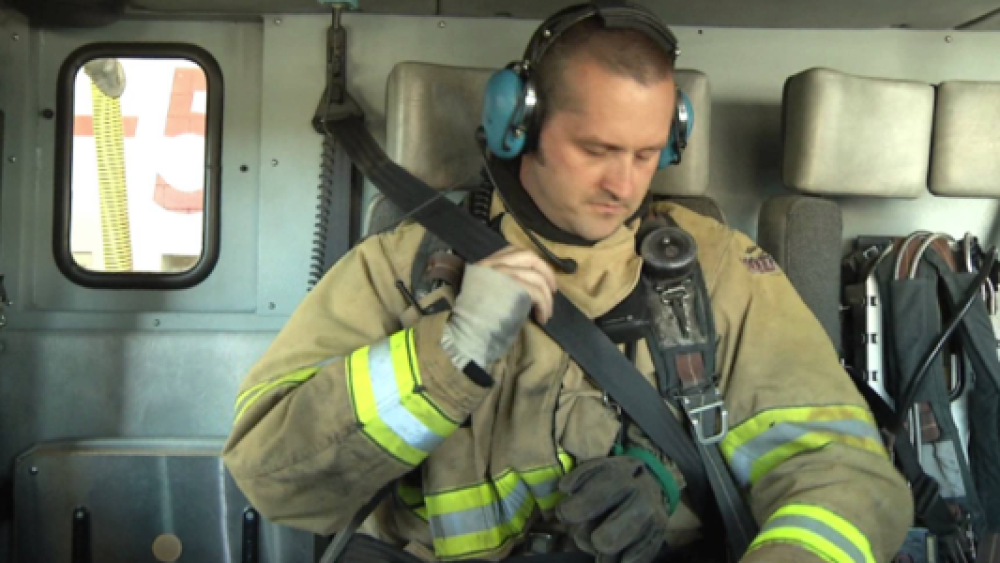“Situational awareness – seeing the bad things coming in time to change the outcome.” — Dr. Richard Gasaway
A lot of work goes into the annual Firefighter Safety Stand Down program to help reduce firefighter morbidity and mortality. Many major fire service organizations support the program, whether financially or through promotion and participation.
This year’s Safety Stand Down theme is situational awareness. I hope everyone reading this has already heard the phrase, read about it, or taken a class about how to improve it, particularly because it can relate to every corner of fire service operations.
[Read next: Situational awareness: The foundation for good decision-making]
“How is this still possible?”
On June 9, 2022, FirefighterCloseCalls shared news that a volunteer firefighter was ejected from the apparatus he was driving while responding to a call. The firefighter, who was not wearing a seatbelt, died from his injuries.
The next day, I was speaking with an assistant fire chief who asked me if I saw the seatbelt fatality. “How is this still possible in 2022?” the chief asked.
Before I could answer, the chief stated that they were going to ask the crew at the station if this could happen at their department. But ultimately, the chief did not bring up the incident or ask the question because they did not believe the responses would be 100% truthful, and deep down, the chief didn’t want more pushback. They were already getting flack and little support from the department chief for holding officers responsible for enforcing standard operating procedures and guidelines (SOPs and SOGs).
Why it’s hard to spot the gorilla
The subject-matter experts on situational awareness know that the key to good decision-making is seeing the gorilla.
The “gorilla” refers to a decades-old study related to selective attention. Participants were asked to watch a video in which two teams – one wearing black shirts and one white shirts – are passing a ball, and to count how many times players in white shirts pass the ball. Midway through the video, a person in a gorilla costume walks through the game. When participants were asked if they saw the gorilla, more than half reported missing the gorilla entirely. They were totally focused on the task of counting the passes.
Firefighter injury and death due to not wearing a seatbelt is a gorilla we know it is there. Can we all agree to see it, be truthful about it, and change the bad outcomes that are still happening to us?
I asked Dr. Rich Gasaway – a colleague, friend and leading fire service expert on situational awareness – to react to my perspective on the seatbelt issue.
Regarding my statement, “Firefighter injury and death due to not wearing a seatbelt is a gorilla we know is there,” Gasaway states, “I’m not sure everyone sees that gorilla (i.e., not everyone sees the problem).” Further, to my point, “Can we all agree to see it?” Gasaway explains: “This infers that not seeing the gorilla is a choice a person has conscious control over. When shown the Simons and Chabris video, some will see the gorilla, and some will not. If the viewer has seen the video before, they are primed to see the gorilla because they have an expectation based on previous experience.”
Gasaway continued: “In my opinion, I don’t think the problem is so much that responders don’t see the problem with seatbelt usage. Rather, I think it is a combination of denial that an accident will happen to THEM, and desensitization to risk and peer/supervisor pressure toward non-compliance.
“I have had conversations with many responders about seatbelt use. I find it interesting that some acknowledge that they always wear a seatbelt in their POV but rarely/never on a fire apparatus. These people see the gorilla. Rather, they choose to ignore or deny the risk.”
Difficult conversations and questions about seatbelts
So, before you work to improve your situational awareness competency, you may need to have a difficult conversation within your crew about seatbelt use and compliance. After all, the problem may not be the gorilla but rather the elephant in the room.
To help the with the uncomfortable conversations, add these questions to this year’s Firefighter Safety Stand Down program:
- Fire chief: Do all your members wear their seatbelt?
- Chief officers: Do all your members under your command wear their seatbelt?
- Company officers: Do all your crewmembers wear their seatbelt?
- Drivers: Do all of your passengers wear their seatbelt?
- Firefighters: Do you wear your seatbelt 100% correct 100% of the time?
We all get to test our situational awareness KSAs every time we ride in the apparatus. But before the tones hit, it will take courage to have an open, honest discussion about seatbelts to uncover any seatbelt elephants in your fire department. When we get our seatbelt behavior 100% correct, 100% of the time, our overall decision-making will be better.



